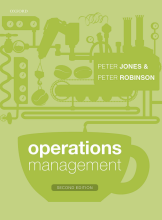Summary: Accounting Ii
- This + 400k other summaries
- A unique study and practice tool
- Never study anything twice again
- Get the grades you hope for
- 100% sure, 100% understanding
Read the summary and the most important questions on Accounting II
-
Chapter 14: Cost flow
This is a preview. There are 11 more flashcards available for chapter 18/01/2021
Show more cards here -
Explain the differences between financial accounting & managerial accounting
Financial accounting:- External users
- Financial statements > quarterly and annually
- General purpose
- Content of report is generally accounting principles
- Verification process > audited by CPA
Managerial accounting- Internal users > officers and managers
- Internal reports > as frequently as needed
- Special purpose for specific decisions
- Contents of report is evaluated based on relevance to decisions.
- Verification process > no independent audits
-
Name + explain the different company types
- Manufacturing companies > produces and sell those goods
- Service companies > has no physical product but provides a service
- Retailing companies > sell pre-produced goods
- Manufacturing companies > produces and sell those goods
-
Name + explain the 3 components of manufacturing costs
- Direct material costs: Costs of all (raw) materials that are directly used in the manufacturing
- Direct labor: labour that is directly correlated to the manufacturing process within the factory
Manufacturing overhead costs: All cost other than direct material or direct labor cost
- Direct material costs: Costs of all (raw) materials that are directly used in the manufacturing
-
Where will product cost be allocated
Product cost will be allocated on the balance sheet as Inventory (asset) -
How are Period Cost recorded and where
Period Costs are recorded directly on the Income statement as Expenses -
What is the manufacturer COGS formula?
Beg. Finished goods inventory + COGS (manufactured) - End. Finished goods inventory = COGS for a manufacturer -
Chapter 18: Cost volume profit
This is a preview. There are 8 more flashcards available for chapter 19/01/2021
Show more cards here -
Name + explain the elements of cost behaviour
- Variable costs: Cost depend on the level of production
- Direct materials
- Direct labour
- Indirect materials
- Mixed costs: combination of variable and fixed costs
- Maintenance
- Utilities
- Fixed costs: Cost stay constant regarding of the level of production
- Rent
- Depreciation
- Variable costs: Cost depend on the level of production
-
What is true about Fixed cost
The more units you sell the lower your unit costs are because fixed cost per unit varies inversely with activity level. -
How to calculate contribution margin ratio
Contribution marginratio = unit contribution margin / unit selling price x 100 —> "will give you a percentage" -
How to calculate margin of safety
Margin of safety in dollars = actual sales revenue - break-even sales revenue
Margin of safety in units = actual sales units - break-even sales units
Margin of safety in ratio = margin of safety in dollars / actual sales —> "will give a %"
- Higher grades + faster learning
- Never study anything twice
- 100% sure, 100% understanding































